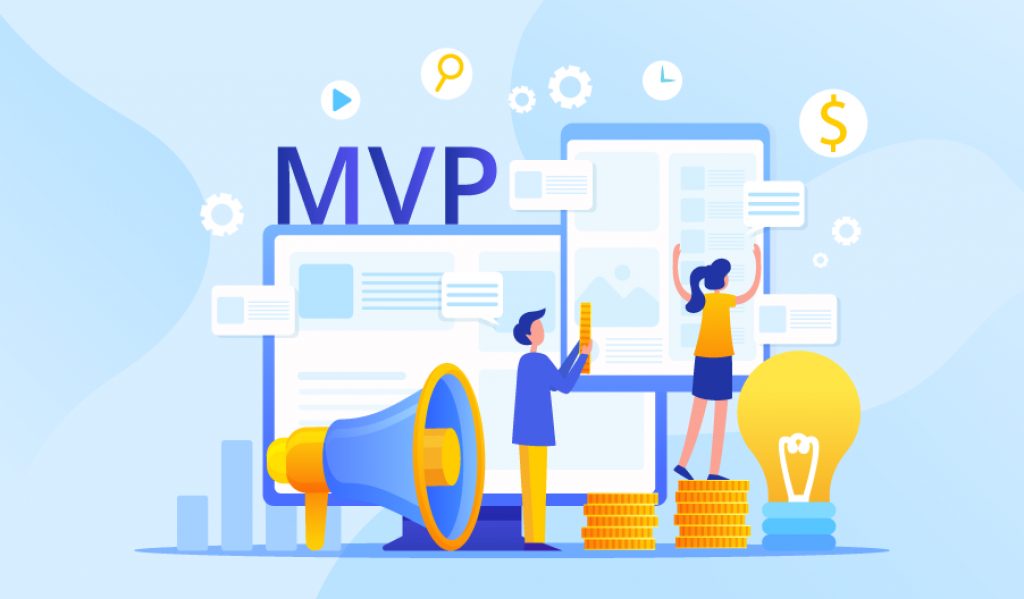
In business, everyone looks for the most cost-effective strategies to launch their products, and MVP (minimum viable product) development is one of the options to do so.
MVP helps attract investors, accelerate time-to-market, and it is also a great tool for refining your value offering and business model research; this article focuses on the latter.
Let’s discuss five strategies of using MVP as an asset in customer research.
Table of Contents
1. Focus on Customer Needs

img source: kayako.com
Startup ideas often appear from noticing an issue or need: in industry operations, social processes, people’s problems, etc. When the time comes to building MVP (if you need help with that, head over to purrweb), you’re already focused on discovering problem-solution fit by figuring out how to resolve the issue you’ve found better than your competitors — or how to solve it, period, if you’ve found an issue nobody’s addressed yet. For that, you need to talk to your customers.
Marketers often say that one in-depth interview is worth 1000 surveys. Yes, it’s a research method that does not scale, but it allows you to dive into peculiarities of customer behavior you wouldn’t have noticed if you’ve used a survey. You can find out what the state people are in when they’re searching for a solution like the one you’re offering. Ask questions about what they are unhappy about when they’re using existing solutions. Find out what they think constitutes a better customer experience; etc. Use interviews to determine the most common triggers that drive customers to search for solutions, for their needs’ fulfillment. Their answers are essential for your positioning, brand language, etc.
Of course, interviews are time-consuming and they don’t scale, but the insights gained in the early stages of MVP development are super important. It’s better to conduct two sessions of interview: first, to find out the problem-related details — questions about the challenge or need you plan to solve or respond to; second, to find out solution-related things — with the MVP playtesting, user flow monitoring, and prompts for improvements. MVP in this scenario is built according to what you’ve gathered from interviews, obviously.
Surveys and other forms of gathering info about customer needs can also help you to refine your MVP and get useful feedback.
2. Landing Page For Your MVP

img source: scnsoft.com
The second thing you can do to test your product among the potential customers, figure out the scale of user demands, and get a more comprehensive picture of your audience segment is create a landing page (LP) for your MVP. Landing pages can be used to check many assumptions/run many tests among the target audience. You have to remember not to conduct them at the same time: the results wouldn’t be clear.
-
A landing page that collects emails to test people’s interest in the product
On this LP, you briefly explain the value proposition of your product: what issue it solves, how, and for whom, leave links to social media and other means to connect you. When the product launches, people who have signed up are notified. The number of collected emails is your signifier of interest in your product. Users sign up, and a startup receives the means to connect with their users via email newsletters, giving them updates on product development, news, etc. (if they’ve checked the “I agree to receive promotional material” checkbox, of course).
-
An informative landing page that collects feedback on the value offered in MVP
An informative landing page can show users features from MVP that make it distinct, what unique approach to solving customer’s pain it has, and what the main features look like. Informative landing pages often include mockups of the product, explainer videos about the market MVP will operate on, etc. Within this setup, you can integrate LP with a feedback form about different features, create an interactive environment for users to try them, run A/B tests to refine your tone of voice and wording in the unique value proposition formulation, run surveys, etc. You have to include a call-to-action (CTA) here, too, though: otherwise, it’ll be hard to measure the power of people’s interest.
Fake-door test to check people’s willingness to pay for your product. A cool thing to add to an informative LP with your MVP is CTA to pay to try the product for $N/buy the product, then redirect them to a page informing them the product isn’t ready, and ask them to leave emails to be notified of release. Fake-door will allow you to find out how many people are willing to pay for your product, which is the most important signifier of you grasping product-market fit. Within this method, you can test your monetization strategy, too, — and refine your business model if you’ll find out that a) no one pays, b) people say it’s too expensive.
Landing page for pre-orders. Pre-orders are another way to get in-depth insights about your product: because people actually do pay. Don’t place a pre-order CTA with your LP if you haven’t yet refined the value proposition and don’t use this method if you don’t actually have the means to keep your promises in time (or prepare to write emails with apologies and initiate refunds).
3. Ad Campaign Testing
It is estimated that in 2024, companies spent upwards of hundreds of billions of dollars on ad campaigns —US businesses alone spend more than $240 billion on advertising, which made the US a global leader in promotional activities.
Ads have never been more insightful than now and businesses can create ad campaigns solely focused on gathering information about customers; testing their assumptions about language their audience responds to; testing their theories about customer’s pains; etc.
Ads are, for instance, a great way to check if insights you’ve gotten from the customer interviews work on the massive level, if there’s a pool of people who experience the same issue, talk in the same language, or have the same needs as your respondents. If you’ll use the wording from the interviews, the results might surprise you: people appreciate when people talk to them about challenges they’re dealing with in the language they’re using to describe it.
4. Crowdfunding Test

img source: northell.com
Crowdfunding is highly popular. The main difference between VCs and crowdfunding is that with the latter, startups raise money from a large pool of people that contribute a smaller amount of money without giving away their equity. The goal of VCs is to seek startups with long-term growth potential.
Crowdfunding puts less pressure on the startups and, if curated with care and attention to the backers, allows startups to cultivate a community of people interested in the product — and that can be a critical success factor for early-stage startups’ marketing strategies.
To run a campaign that will stand out among roughly 6,5 million crowdfunding projects launched each year, you need extensive preliminary research and access to communities with your audience — within social media, or offline, or within both.
5. Wizard of the Oz
Another way to test your MVP is through the Wizard of Oz method. Here, instead of showing people ready-to-use, automated, full-fledged MVP, you “trick” the customers into thinking they’re using an MVP like this whereas they actually interact with the fancy blueprint and answering actions are performed by you, engineers, or other people from the product team.
To use this, you will have to build a really fancy design for your wizarding to be believable. It’s better not to use the brand name you’ve planned to use for your startup when conducting this test — and that it requires a lot of resources to conduct. However, it’s a great solution to pinpoint what elements of infrastructure and functions are truly essential, what you’ve missed, and, in general, refine the user experience.







